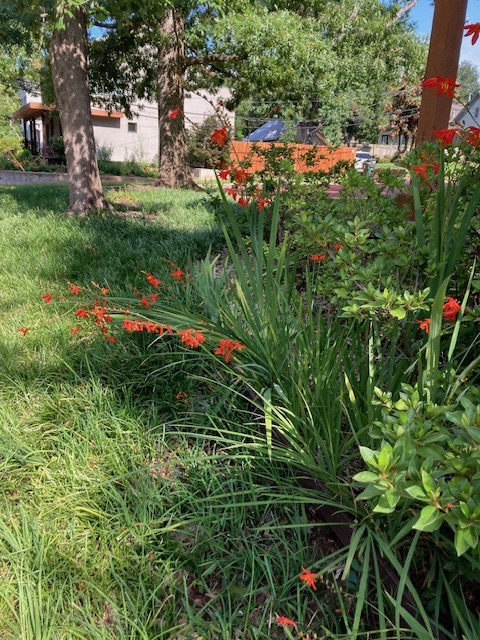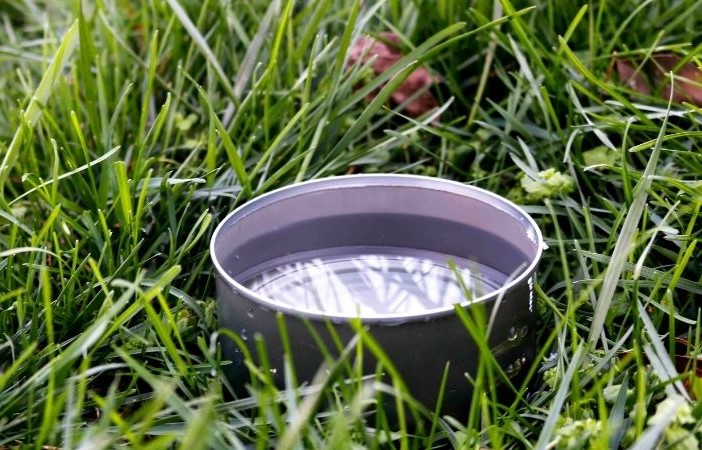Alternatives to Turfgrass
As a child, few things rivaled the simple joy of running barefoot through our backyard. My brothers and I spent many afternoons lying in the grass, watching clouds, and turning a garden hose into our very own water park. That soft, green lawn was the heart of so many memories—but looking back, it was only possible because of South Louisiana’s abundant rainfall and the wide-open, treeless expanse of our new neighborhood.
As an adult, I was delighted to put down roots in Tyler. While I fell in love with the tall trees, I realized that grass struggled to grow in their dappled light, and faced a choice: hold on to the ideal of a picture-perfect lawn or embrace something new. I chose to keep the trees and transform parts of the yard with low-maintenance ground covers, and honestly, I’ve never looked back.
Why are Americans so attached to their lawns? The idea of a perfectly manicured green yard traces back to 17th- and 18th-century European estates, where sprawling lawns were symbols of wealth and power. Early visitors to England were captivated by these picturesque landscapes and brought the concept home, where it evolved into a staple of suburban living. Without the sheep Europeans used to keep the grass trimmed, Americans needed to use machines or staff to maintain the look.
But traditional grass lawns demand enormous resources. Between the water, chemicals, and constant mowing, they’re not only high-maintenance but also far from sustainable. Fortunately, there are creative, eco-friendly alternatives that can be just as beautiful—if not more so.
If you’re ready to rethink your yard, here are options to consider:
Turfgrass Alternatives
Mosses are ideal for moist, shaded areas and bring a soft, natural feel to your yard. Ornamental grasses help hold soil in place, and do well in sunny spots. Some people are experimenting with clover and sedges. All offer that lush, green aesthetic without much maintenance.
Ground Covers
Ivy, Asiatic jasmine, dwarf Mondo grass, ajuga, creeping plumbago, creeping thyme, and liriope are excellent options for replacing turfgrass. These low-growing plants spread to fill empty spaces, creating a rich, textured look that’s long-lasting and disease-resistant. While ground covers may take a little time to establish, the payoff is worth it—a yard that practically takes care of itself. Another option is to cover the area with crushed gravel, washed gravel, or pine straw. All three allow water to percolate down through the soil.
Perennials and Pollinator-Friendly Plants
Why not turn part of your lawn into a vibrant perennial/pollinator bed or a mini pocket prairie? These plants not only hold the soil in place but also provide food and shelter for bees, butterflies, and other wildlife. You’ll trade monotonous grass for a lively, colorful ecosystem right in your backyard. After the first frost, leave some of the seed heads to feed those hungry birds during the winter cold.
My Lawn, Reimagined
In my own yard, I’ve kept a small patch of soft grass—perfect for walking barefoot on—but most of the space is now filled with liriope, Asiatic jasmine, and native plants that buzz with life. These changes have transformed more than just my lawn. I spend less time mowing and watering, and I love watching the variety of textures, colors, and creatures that now call my yard home.
Replacing turfgrass isn’t about giving something up; it’s about gaining a more sustainable, rewarding landscape that works with nature rather than against it. Whether you go small or start big, taking even one step toward a turfgrass alternative can save resources, support pollinators, and give you a yard that’s as low-maintenance as it is beautiful.
Smith County Master Gardeners are volunteer educators certified and coordinated by the Texas A&M AgriLife Extension Service.
Ann Butler
Smith County Master Gardener



